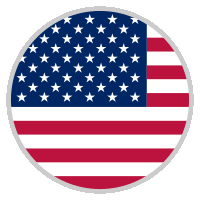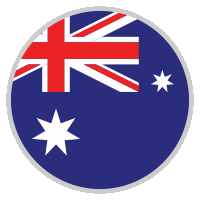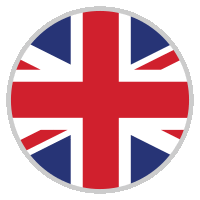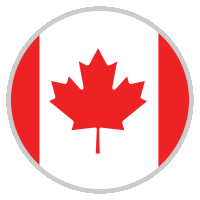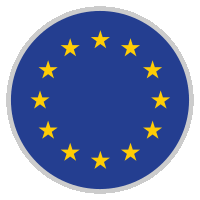-
Antioxidant, antiangiogenic, antitumor agent
(-)-Epigallocatechin gallate is a potent anti-oxidant polyphenol flavonoid isolated from green tea.- Grace Northrop, .et al. , Food Funct, 2022, Apr 4;13(7):3894-3904 PMID: 35285840
- Wafa Dridi, .et al. , Carbohydr Polym, 2021, 274:118670 PMID: 34702486
- A S D'Costa, .et al. , Food Chem, 2020, Oct 1;341(Pt 2):128256 PMID: 33035827
- Fenteany G, .et al. , Sci Rep, 2019, Sep 5;9(1):12801 PMID: 31488855
- LiliSun, .et al. , Nutrition, 2019, pii:S0899-9007(18)31140-7
- 3-Indolebutyric acid is a plant hormone in the auxin family and is an ingredient in many commercial horticultural plant rooting products.
-
Hyaluronan (HA) synthesis inhibitor
4-Methylumbelliferone is a selective inhibitor of Hyaluronan (HA) synthesis which is thought to function as an inhibitor via the depletion of UDP-glucuronic acid, the common substrate for HA synthesis. - 5-Hydroxytryptophan (5-HTP) is a naturally occurring amino acid and chemical precursor as well as a metabolic intermediate in the biosynthesis of the neurotransmitters serotonin and melatonin from tryptophan.
-
Aesculin is a glucoside that naturally occurs in the horse chestnut (Aesculus hippocastanum). It is used in a microbiology laboratory to aid in the identification of bacterial species (especially Enterococci and Listeria).
-
Tyrosinase inhibitor
Aloin (Barbaloin) is a yellow crystalline substance obtained from aloe and is reported to be a potent inhibitors of tyrosinase. -
Apoptosis Inducer
Andrographolide is an interesting pharmacophore with anticancer and immunomodulatory activities and hence has the potential for being developed as a cancer therapeutic agent. -
Protein kinase inhibitor
Apigenin, found in many plants, is a natural product belonging to the flavone class that is the aglycone of several naturally-occurring glycosides. Apigenin acts as a monoamine transporter activator, one of the few chemicals demonstrated to possess this property. Apigenin is a ligand for central benzodiazepine receptors that competitively inhibited the binding of flunitrazepam with a Ki of 4μM, exerting anxiolytic and slight sedative effects.
-
Tyrosinase inhibitor
Arbutin is a glycosylated hydroquinone used in traditional Chinese medicine (TCM). Arbutin inhibits melanin formation due to its tyrosinase inhibitory activity.
-
cytochrome oxidase inhibitor
Artesunate is a semisynthetic derivative of artemisinin used to treat malaria. It has also been shown to effective against other parasites such as liver flukes. Artesunate also demonstrates cytotoxic action against cancer cell lines of different tumor types. Artesunate has been shown to inhibit TNF--induced production of proinflammatory cytokines via inhibition of NF-B and PI3 kinase/Akt signal pathway in human rheumatoid arthritis fibroblast-like synoviocytes. -
Anti-inflammatory agent
Asiatic acid is commonly used in wound healing. Asiatic acid has antioxidant, anti-inflammatory and neuroprotective properties. Asiatic acid derivative synthesis can be used as Anticancer agents; Glycogen phosphorylase inhibitors; Hepatoprotectants.
- Rakhi Mishra, .et al. , Indian J Res Homoeopathy, 2022, Sep 27
-
Protein synthesis inhibitor
Azomycin(2-Nitroimidazole) is an antimicrobial antibiotic produced by a strain of Nocardia mesenterica, which is active against aerobic Gram-positive and Gram-negative bacteria. -
Lipoxygenase Inhibitor
Baicalein is a flavonoid originally isolated from the roots of Scutellaria baicalensis Georgi. Baicalein inhibits lipid peroxidation, as assessed by production of TBARS, with an IC50 value of 5 µM.
- Wafa Naji Shnaikat, .et al. , Iraqi J Pharm Sci, 2023, 31(Suppl.):92-99
-
Berberine hydrochloride was novelly found that it has various beneficial effects on the cardiovascular system and significant anti-inflammatory activities. Berberine can effectively reduce intracellular superoxide levels in LPS-stimulated macrophages. Such a restoration of cellular redox by berberine is mediated by its selective inhibition of gp91phox expression and enhancement of SOD activity.
- Takashi Azuma, .et al. , SEP PURIF TECHNOL, 2019, Apr; 212: 483-489
- Azuma T, .et al. , Environ Sci Pollut Res Int, 2017, Aug;24(23):19021-19030 PMID: 28660504
- Azuma T, .et al. , Sci Total Environ, 2016, Apr 1;548-549:189-197 PMID: 26802347
-
Bergenin (Cuscutin) is an isocoumarin isolated from various medicinal plants. Shows mild anti-HIV activity, antihepatotoxic activity and antiulcer activity.
- Barai P, .et al. , Behav Brain Res, 2019, Jan 1;356:18-40 PMID: 30118774
- Betanin is a red glycosidic food dye obtained from beets
- Sukirtha Srivarathan, .et al. , J Food Compos Anal, 2023, 115: 104876
- Grewal PS, .et al. , Metab Eng, 2018, Jan;45:180-188 PMID: 29247865
- Tom Clifford, .et al. , Eur J Nutr, 2017, 56(3): 1245-1254 PMID: 26873098
- Kaimainen M, .et al. , Food Chem., 2015, Nov 15;187:398-406. PMID: 25977043
-
Bilobalide, a biologically active terpenic trilactone (terpinoid), derived from geranylgeranyl pyrophosphate (GGPP) is an inducer of cytochrome P450 enzymes CYP3A1 and CYP1A2. May contain properties to stop apoptosis activation of the phosphatidylinositol 3-Kinase pathway in SH-SY5Y cells.
-
Biochanin A is an antiproliferative and anti-inflammatory agent that inhibits iNOS expression and lipopolysacharide (LPS)-induced nitric oxide production in macrophages. Additionally, Biochanin A displays the ability to block phosphorylation of IκBα and p38 MAPK, which prevents NF-κB activation. Furthermore, Biochanin A has been observed to suppress IL-6, IL-1β, and TNF-α production.
- Capsaicin is an active component of chili peppers, which are plants belonging to the genus Capsicum.
- Xiao-Yan Liu, .et al. , Sci Rep, 2022, 12: 11996 PMID: 35835852
- Thieu X. Phan, .et al. , bioRxiv, 2021, February 27
- Thieu X Phan, .et al. , J Physiol, 2020, Sep 17 PMID: 32944976
- Jun Hai, .et al. , Biosci Biotechnol Biochem, 2020, Jul 7;1-7 PMID: 32633621
- Thieu X. Phan, .et al. , bioRxiv, 2020, February 04
-
Celastrol is a triterpenoid antioxidant compound isolated from the Chinese Thunder of God vine (T. wilfordii). In an isolated rat liver assay of lipid peroxidation, celastrol had an IC50 value of 7 µM, equivalent to about 15 times the antioxidant potency of α-tocopherol.
- Xuechun Wang, .et al. , Int J Mol Sci, 2023, Mar 8;24(6):5204 PMID: 36982279
- R. San Gil, .et al. , bioRxiv, 2020, Jan
- Abdin AA, .et al. , Eur J Pharmacol., 2014, 742:102-12 PMID: 25218987
-
Chlorogenic acid is an important intermediate in lignin biosynthesis. This compound, long known as an antioxidant, also slows the release of glucose into the bloodstream after a meal.
- Feilin Dong, .et al. , Med Sci Monit, 2020, 26: e923358-1–e923358-10 PMID: 32868754
-
Aromatase Inhibitor
Chrysin is a naturally occurring flavone chemically extracted from the blue passion flower (Passiflora caerulea). It has been shown to induce an anti-inflammatory effect, most likely by inhibition of COX-2 expression and via IL-6 signaling. In rodent in vivo studies, chrysin was found anxiolytic. -
EGFR inhibitor
Chrysophanic acid (Chrysophanol) blocks proliferation of colon cancer cells by inhibiting EGFR/mTOR pathway. - Cinchonidine is an alkaloid used in asymmetric synthesis in organic chemistry. It is a stereoisomer and pseudo-enantiomer of cinchonine.
- Coenzyme Q10 is a component of the mitochondrial transporter chain that behaves as a powerful antioxidant. Displays neuroprotective activity.
-
Stat3 inhibitor
Cryptotanshinone, a natural compound isolated from the roots of Salvia miltiorrhiza Bunge (Danshen), dramatically blocks STAT3 Tyr705 phosphorylation but not STAT3 Ser727 phosphorylation in DU145 cells, and significantly inhibits JAK2 phosphorylation with IC50 of ~5 μM without affecting the phosphorylation of upstream kinases c-Src and EGFR. -
Dihydropyrimidinase Inhibitor
Dihydromyricetin (Ampelopsin (flavanol); Ampeloptin) is a natural antioxidant with good prospects. - Cyclovirobuxine D (Bebuxine) is an active compound extracted from Buxus microphylla that significantly increases cardiomyocytes viability injured by oxidation or hypoxia.
- Cytisine is a nicotinic acetylcholine receptor agonist, and as a pharmaceutical preparation it is available for the treatment of nicotinism. It is a pyridine-like alkaloid that can be toxic in high doses. Pharmacologically it exhibits similar effects to nicotine due to structural similarity of the two molecules.
- Daidzein belongs to the group of isoflavones. Daidzein and other isoflavone compounds, such as genistein, are present in a number of plants and herbs. Soy isoflavones are a group of compounds found in and isolated from the soybean. Besides functioning as antioxidants, many isoflavones have been shown to interact with animal and human estrogen receptors, and therefore are known as phytoestrogens.
- Azuma T, .et al. , Environ Sci Pollut Res Int, 2017, Aug;24(23):19021-19030 PMID: 28660504
- Azuma T, .et al. , Sci Total Environ, 2016, Apr 1;548-549:189-197 PMID: 26802347
- Dihydroartemisinin is the active metabolite of all artemisinin compounds (artemisinin, artesunate, artemether, etc.) and is also available as a drug in itself. It is a semi-synthetic derivative of artemisinin and is widely used as an intermediate in the preparation of other artemisinin-derived antimalarial drugs.
- Xinyu Zhou, .et al. , Cancers (Basel), 2020, Sep; 12(9): 2514 PMID: 32899699
- Dioscin (Collettiside III) is extracted and isolated from Polygonatum Zanlanscianense Pamp with IC50 of 2.6, 0.8, 7.5, and 4.5 μM for the inhibition of the growth of the MDA-MB-435, H14, HL60, and HeLa cell lines, respectively.
-
Pdia3/ERp57 activator, STAT3 inhibitor
Diosgenin is a steroid sapogenin and the precursor for the semisynthesis of progesterone which in turn was used in early combined oral contraceptive pills.It is the product of hydrolysis by acids, strong bases, or enzymes of saponins, extracted from the tubers of Dioscorea wild yam, such as the Kokoro.- Rashmi Rawat, .et al. , Food Chemistry Advances, 2022, 1: 100092
- Ecdysone is a steroidal prohormone of the major insect molting hormone 20-hydroxyecdysone, which is secreted from the prothoracic glands.
- Yanina G. Razuvaeva, .et al. , Appl Sci, 2023, 13(2), 860
- Miwako Toyofuku, .et al. , J Insect Physiol, 2021, Oct;134:104294 PMID: 34389412
-
Emodin is a purgative resin, from rhubarb, the buckthorn and Japanese Knotweed (Fallopia japonica). It belongs to a family of compounds called anthraquinones, which have shown anti-inflammatory and anticancer effects
- Sakanashi M, .et al. , Circ J. , 2013, 77(7):1827-37. PMID: 23615023
-
15-PGDH inhibitor
Glycyrrhetinic acid inhibits the enzymes (15-hydroxyprostaglandin dehydrogenase and delta-13-prostaglandin) that metabolize the prostaglandins PGE-2 and PGF-2α to their respective 15-keto-13,14-dihydro metabolites which are inactive. - Ergosterol is a sterol and a biological precursor (a provitamin) to vitamin D2. Ergosterol is a component of fungal cell membranes, serving the same function that cholesterol serves in animal cells. Because ergosterol is present in fungal cell membranes yet absent in animal cell membranes, it is a useful target for antifungal drugs. .
-
TRP agonist
Evodiamine is a chemical extracted from the Tetradium family of plants. It acts primarily as a thermogenic and stimulant. - Fisetin is a flavonol, a structurally distinct chemical substance that belongs to the flavonoid group of polyphenols. It can be found in many plants, where it serves as a colouring agent. Possible anti-aging, anti-inflammatory, anti-cancer, and anti-viral properties of fisetin are under active scientific investigation.
- Bih-Cheng Chen, .et al. , Phytomedicine, 2019, Apr; 57:1-8
- Jeng LB, .et al. , J Cell Physiol, 2018, Sep;233(9):7134-7142 PMID: 29574877
- Kuan-Ho Lin, .et al. , Journal of Functional Foods, 2018, 52: 212-218
- Formononetin (Formononetol) is a phytoestrogen from the root of Astragalus membranaceus and an O-methylated isoflavone. It is used as a blood enhancer and to improve blood microcirculation in complementary and alternative medicine. It promotes endothelial repair and wound healing in a process involving the over-expression of Egr-1 transcription factor through the regulation of the ERK1/2 and p38 MAPK pathways.
- Fumalic acid(Ferulic acid) is a hydroxycinnamic acid and a type of organic compound found in the Ferula assafoetida L. or Ligusticum chuanxiong. It has many pharmacology functions, such as anti-blood platelet collection , ease pain better the alive of prostate , relax the blood vessel convulsion.
- Gastrodin (Gastrodine) is a polyphenol. It is the glucoside of 4-hydroxybenzyl alcohol (gastrodigenin).
- Glycyrrhizic acid is a widely used anti-inflammatory agent isolated from the licorice root.
Natural Products
Catalog No.
Product Name
Application
Product Information
Product Citation
